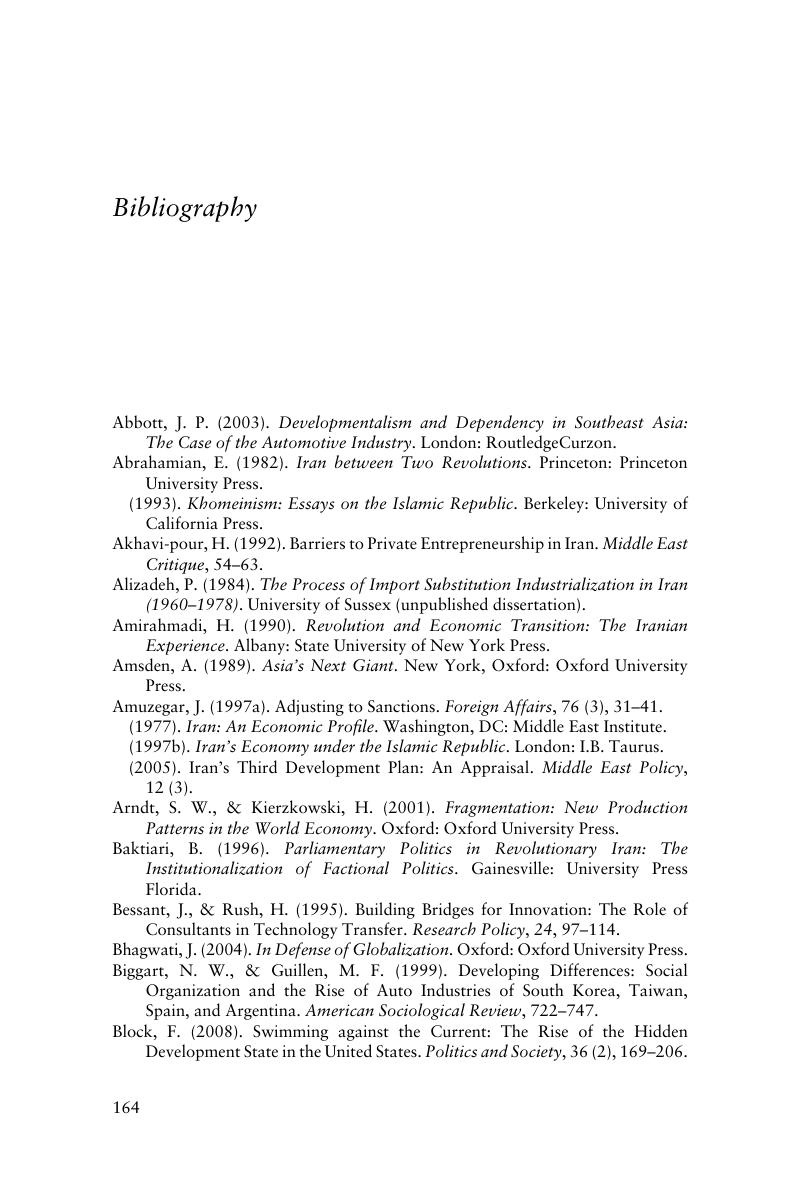Book contents
- Iran Auto
- Structural Analysis in the Social Sciences
- Iran Auto
- Copyright page
- Dedication
- Contents
- Figures
- Tables
- Acknowledgments
- Introduction
- 1 Setting the Stage: The Pre-Revolution Rise and the Post-Revolution Decline of the Automobile Industry
- 2 The Rise of the Industrial Nationalists: Postwar Conflict, Neoliberalism, and National Industrial Strategy
- 3 An Era of Coherence: State-Led Development and the Deepening of Automobile Industry Ties to Society
- 4 Using Global Corporate Networks as a Path to National Industrial Development
- 5 From Industrial Protection to the Rise of the Stakeholder Model of Corporate Ownership
- 6 Factors Determining Iran Auto’s Survival: Industry Fragility, the Quality Issue, and the Conflict over Globalization
- Conclusion
- Bibliography
- Book part
- Index
- References
Bibliography
Published online by Cambridge University Press: 13 October 2017
- Iran Auto
- Structural Analysis in the Social Sciences
- Iran Auto
- Copyright page
- Dedication
- Contents
- Figures
- Tables
- Acknowledgments
- Introduction
- 1 Setting the Stage: The Pre-Revolution Rise and the Post-Revolution Decline of the Automobile Industry
- 2 The Rise of the Industrial Nationalists: Postwar Conflict, Neoliberalism, and National Industrial Strategy
- 3 An Era of Coherence: State-Led Development and the Deepening of Automobile Industry Ties to Society
- 4 Using Global Corporate Networks as a Path to National Industrial Development
- 5 From Industrial Protection to the Rise of the Stakeholder Model of Corporate Ownership
- 6 Factors Determining Iran Auto’s Survival: Industry Fragility, the Quality Issue, and the Conflict over Globalization
- Conclusion
- Bibliography
- Book part
- Index
- References
Summary

- Type
- Chapter
- Information
- Iran AutoBuilding a Global Industry in an Islamic State, pp. 153 - 163Publisher: Cambridge University PressPrint publication year: 2017

